Apple Announces 5nm A14 SoC - Meagre Upgrades, Or Just Less Power Hungry?
by Andrei Frumusanu on September 15, 2020 4:30 PM EST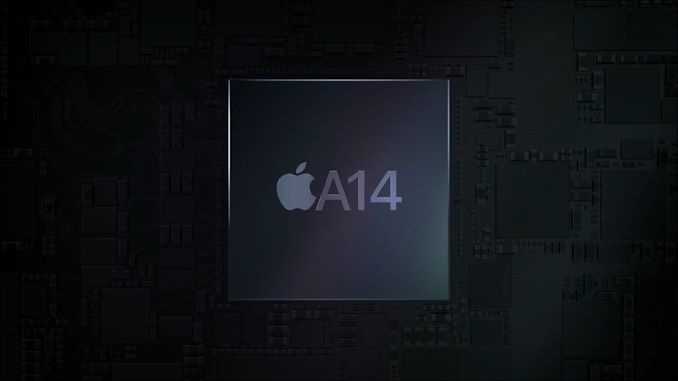
Amongst the new iPad and Watch devices released today, Apple made news in releasing the new A14 SoC chip. Apple’s newest generation silicon design is noteworthy in that is the industry’s first commercial chip to be manufactured on a 5nm process node, marking this the first of a new generation of designs that are expected to significantly push the envelope in the semiconductor space.
Apple’s event disclosures this year were a bit confusing as the company was comparing the new A14 metrics against the A12, given that’s what the previous generation iPad Air had been using until now – we’ll need to add some proper context behind the figures to extrapolate what this means.
On the CPU side of things, Apple is using new generation large performance cores as well as new small power efficient cores, but remains in a 2+4 configuration. Apple here claims a 40% performance boost on the part of the CPUs, although the company doesn’t specify exactly what this metric refers to – is it single-threaded performance? Is it multi-threaded performance? Is it for the large or the small cores?
What we do know though is that it’s in reference to the A12 chipset, and the A13 already had claimed a 20% boost over that generation. Simple arithmetic thus dictates that the A14 would be roughly 16% faster than the A13 if Apple’s performance metric measurements are consistent between generations.
On the GPU side, we also see a similar calculation as Apple claims a 30% performance boost compared to the A12 generation thanks to the new 4-core GPU in the A14. Normalising this against the A13 this would mean only an 8.3% performance boost which is actually quite meagre.
In other areas, Apple is boasting more significant performance jumps such as the new 16-core neural engine which now sports up to 11TOPs inferencing throughput, which is over double the 5TOPs of the A12 and 83% more than the estimated 6TOPs of the A13 neural engine.
Apple does advertise a new image signal processor amongst new features of the SoC, but otherwise the performance metrics (aside from the neural engine) seem rather conservative given the fact that the new chip is boasting 11.8 billion transistors, a 38% generational increase over the A13’s 8.5bn figures.
The one explanation and theory I have is that Apple might have finally pulled back on their excessive peak power draw at the maximum performance states of the CPUs and GPUs, and thus peak performance wouldn’t have seen such a large jump this generation, but favour more sustainable thermal figures.
Apple’s A12 and A13 chips were large performance upgrades both on the side of the CPU and GPU, however one criticism I had made of the company’s designs is that they both increased the power draw beyond what was usually sustainable in a mobile thermal envelope. This meant that while the designs had amazing peak performance figures, the chips were unable to sustain them for prolonged periods beyond 2-3 minutes. Keeping that in mind, the devices throttled to performance levels that were still ahead of the competition, leaving Apple in a leadership position in terms of efficiency.
What speaks against such a theory is that Apple made no mention at all of concrete power or power efficiency improvements this generation, which is rather very unusual given they’ve traditionally always made a remark on this aspect of the new A-series designs.
We’ll just have to wait and see if this is indicative of the actual products not having improved in this regard, of it’s just an omission and side-effect of the new more streamlined presentation style of the event.
Whatever the performance and efficiency figures are, what Apple can boast about is having the industry’s first ever 5nm silicon design. The new TSMC-fabricated A14 thus represents the cutting-edge of semiconductor technology today, and Apple made sure to mention this during the presentation.
Related Reading:
- The Apple iPhone 11, 11 Pro & 11 Pro Max Review: Performance, Battery, & Camera Elevated
- The Samsung Galaxy S20+, S20 Ultra Exynos & Snapdragon Review: Megalomania Devices
- TSMC Expects 5nm to be 11% of 2020 Wafer Production (sub 16nm)
- ‘Better Yield on 5nm than 7nm’: TSMC Update on Defect Rates for N5


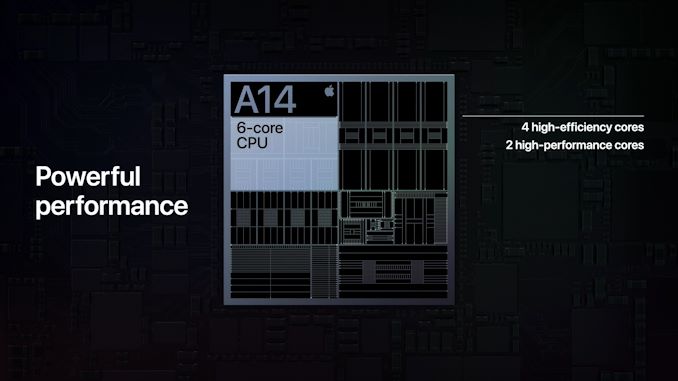
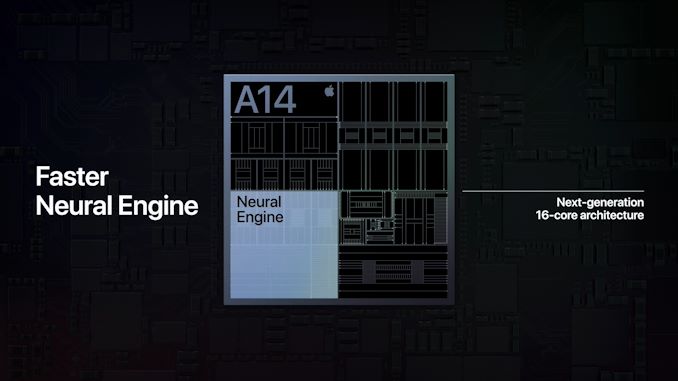
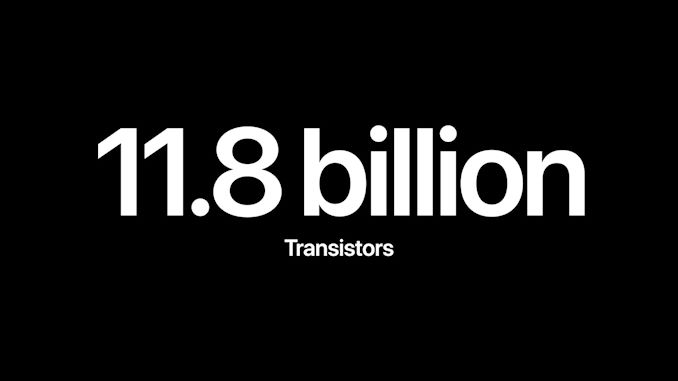
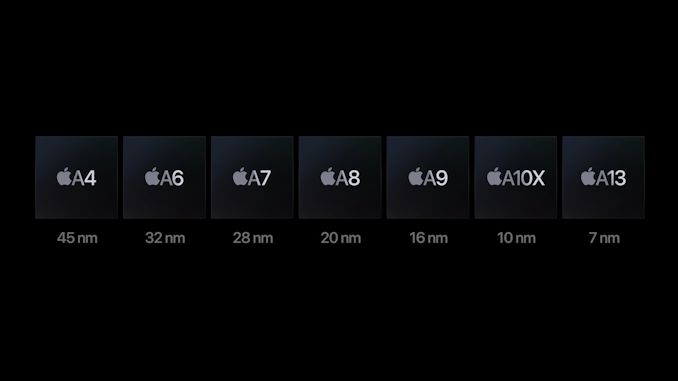








127 Comments
View All Comments
cha0z_ - Monday, September 21, 2020 - link
I am also quite surprised from the performance uplift if it turns out true. Compared to the recent years, it's really really small in both CPU and GPU. Clearly all the budget was put forward the NE, but I still feel that for the major user even the current NE is more than enough and rarely used. To put all into it that will benefit literally less than 1% of the user base instead of CPU/GPU that will benefit all... dunno how to feel about it. Also it doesn't look insanely more efficient, I would expect them to promote that + ipad air battery life to show it too.michael2k - Wednesday, September 23, 2020 - link
Given that every year the iPhone is benchmarked as 4 to 5 years ahead of Qualcomm and Samsung, I don't see the issue with losing a year of CPU/GPU performance gain. It still means they are 4 years ahead.Now you question how ML/NE benefits only 1% of the user base? I'm not sure that's remotely true. Siri uses ML for speech recognition. Are you claiming only 1% of their user base uses Siri?
FaceID and animoji also use ML to recognize your face; are you claiming only 1% of their user base uses FaceID or animoji?
The camera app uses ML in portrait mode to select the foreground and blur the background; are you claiming only 1% of their user base uses portrait mode?
They use ML in their heartbeat monitoring hardware/software to determine if you have an atrial fibrillation. It's possible only 1% of their user base have an Apple Watch and also have an atrial fibrillation, but at 100m watches sold way more than 1% of their users are being monitored for atrial fibrillation; closer to 10% of their user base have an Apple Watch, so at the very least 10% of them use the NE hardware.
Apple definitely uses ML and NE to perform image recognition and tagging on device; are you claiming only 1% of Apple's users search their photos by keywords?
Suraj tiwary - Wednesday, September 23, 2020 - link
Andrei frumusanuplease do cpu benchmarks with spec2017 as spec2006 is too old.
Anymoore - Saturday, September 26, 2020 - link
A14 seems not ready in September unlike A11, A12, A13. So next iPhone also delayed for launch.ChrisGX - Tuesday, September 29, 2020 - link
I think it is possible to be relatively clear about what Apple is claiming here. Granting that Apple is probably referring to the single threaded performance of its A14 performance cores and is probably using Geekbench to get its performance numbers (that is normally what Apple does) then Apple is saying that the A14 will offer 40% more GB5 performance than the A12. So (using representive GB5 benchmark data as a guide) single threaded performance will roughly be:1112 * 1.4 -> 1556.8
A GB5 score of 1557, if confirmed, would mean that Apple has a storming little chip suited to smartphone use that offers the same (peak) single threaded performance as Intel's Core i7-1165G7 Tiger Lake processor. Using a bit more supposition it is possible to weigh up whether a future A14X (it is reasonable to expect that Apple will continue to offer such a product but we will only know for sure once it happens) could actually provide general computing performance in the vicinity of the Core i7-1165G7. To achieve parity with that processor multi-threaded performance in percentage terms (relative to the A12Z/A12X) would have to improve by:
((GB5 score for Core i7-1165G7 - GB5 score for A12Z/A12X) / GB5 score for A12Z/A12X) * 100
((5832 - 4644) / 4644) * 100 -> 25.6%
That seems to be a readily achieveable number when we conider that there is two processor generations and a shrink to the 5nm silicon process between the A12Z/A12X and the A14X.
GPU performance is harder to assess and is best left to when we have some A14X products to compare to Intel's Tiger Lake chips. Still, it isn't so easy to find areas in which the A14X is likely to look like some kind of toy in a direct comparison to the Tiger Lake parts. On the contrary, the limited evidence we have at this point indicates that the A12X will be competitive in performance terms with a relatively high performance part in Intel's 'Mobile', i.e. laptop, processor range while consuming around 1/2 the power. It is hard to dismiss an advantage like that.
A reduction in power consumption and therefore heat that needs to be dissipated through the chassis and skin of a portable device permits the design of thinner and lighter notebooks and tablets and/or longer battery life for such devices. Additionally, it allows the elimination of fans from most of the portable computing devices that consumers will need. Anyone needing a laptop more powerful than that will still need a product that has fans. Irrespective, there still will be a significant Perf/W advantage if the kind of claims that Apple is making about the performance and energy efficiency of its A14 generation cores holds up.
ChrisGX - Tuesday, September 29, 2020 - link
There is a typo in the third paragraph. The reference to A12X is wrong. It should read A14X.six_tymes - Friday, October 2, 2020 - link
those ugly notches, still remain! be gone already!